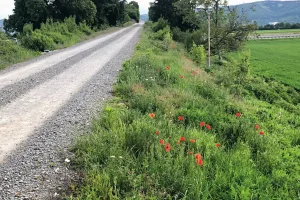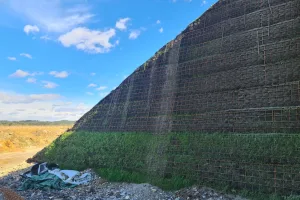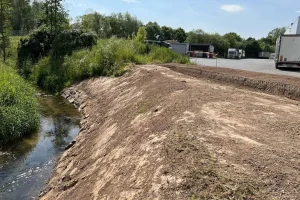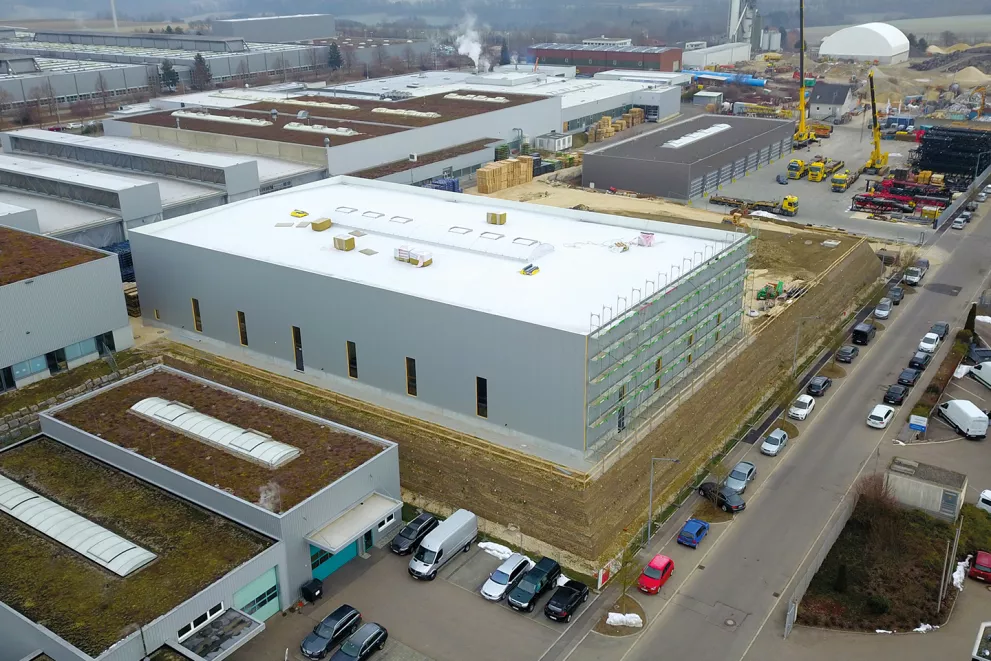Mechanically Stabilised Earth (MSE)
Mechanically stabilised earth systems are versatile and proven geotechnical solutions for the cost-effective stabilisation of slopes, embankments, and retaining structures.
They combine verified structural stability with design flexibility and offer a sustainable alternative to conventional support structures.
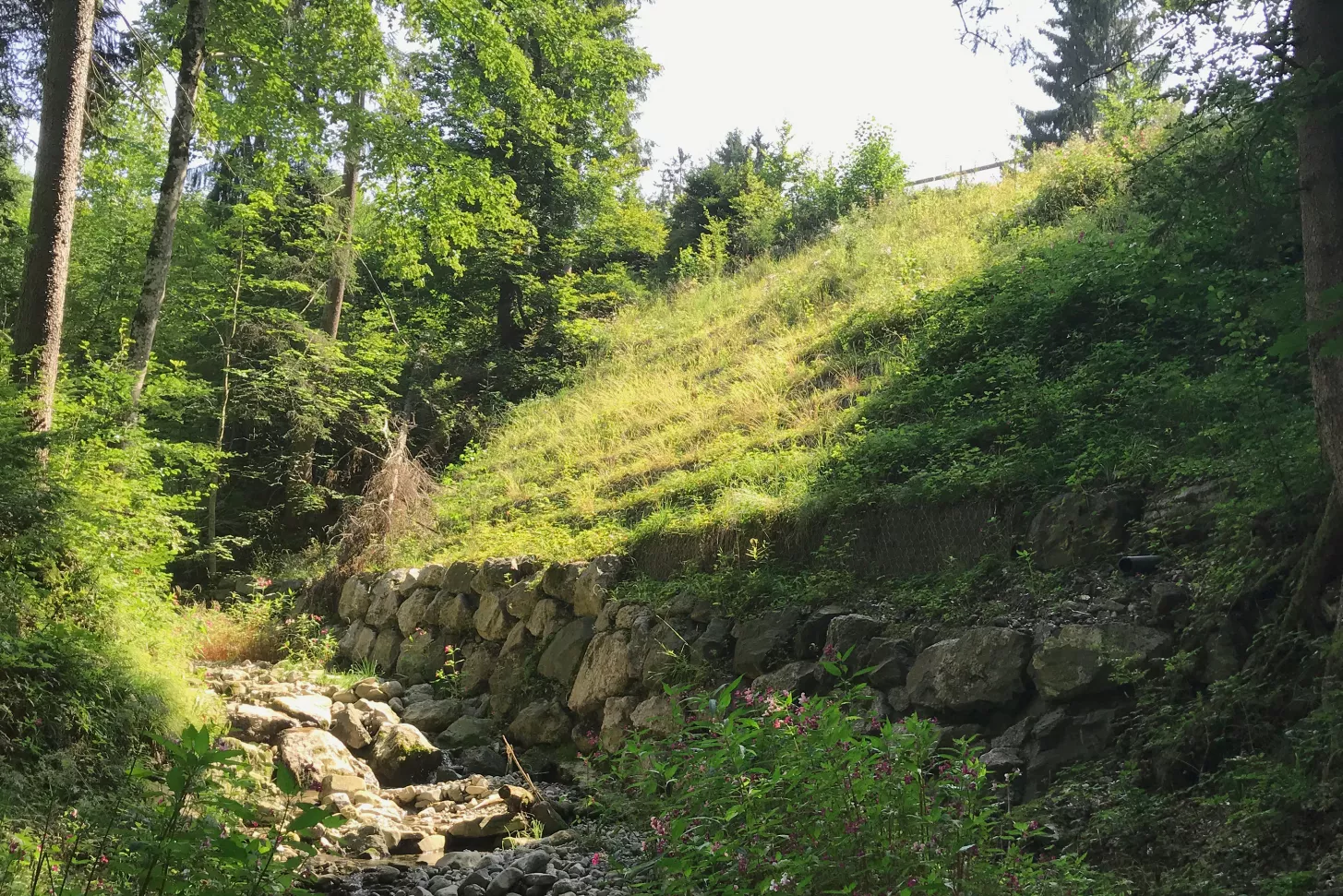
Benefits of Mechanically Stabilised Earth Structures
Verified stability and long service life
Resource-efficient and environmentally friendly system solutions
Active soil management by using locally available materials
Economical overall construction approach
Mechanically Stabilised Earth Systems and Their Functionality
What is Mechanically Stabilised Earth?
Mechanically Stabilised Earth refers to a geotechnical construction method where embankments are reinforced by horizontally placing geosynthetics or steel reinforcements in layers.
The destabilising or sliding forces occurring in steep fills are transferred into these reinforcement layers through soil-reinforcement interaction and are effectively resisted.
The reinforcement absorbs defined tensile forces through frictional interaction and increases the shear strength of the soil mass.
Depending on the project requirements, various system types are used with different facing options, such as gabions, natural stone facings, or vegetated mats.
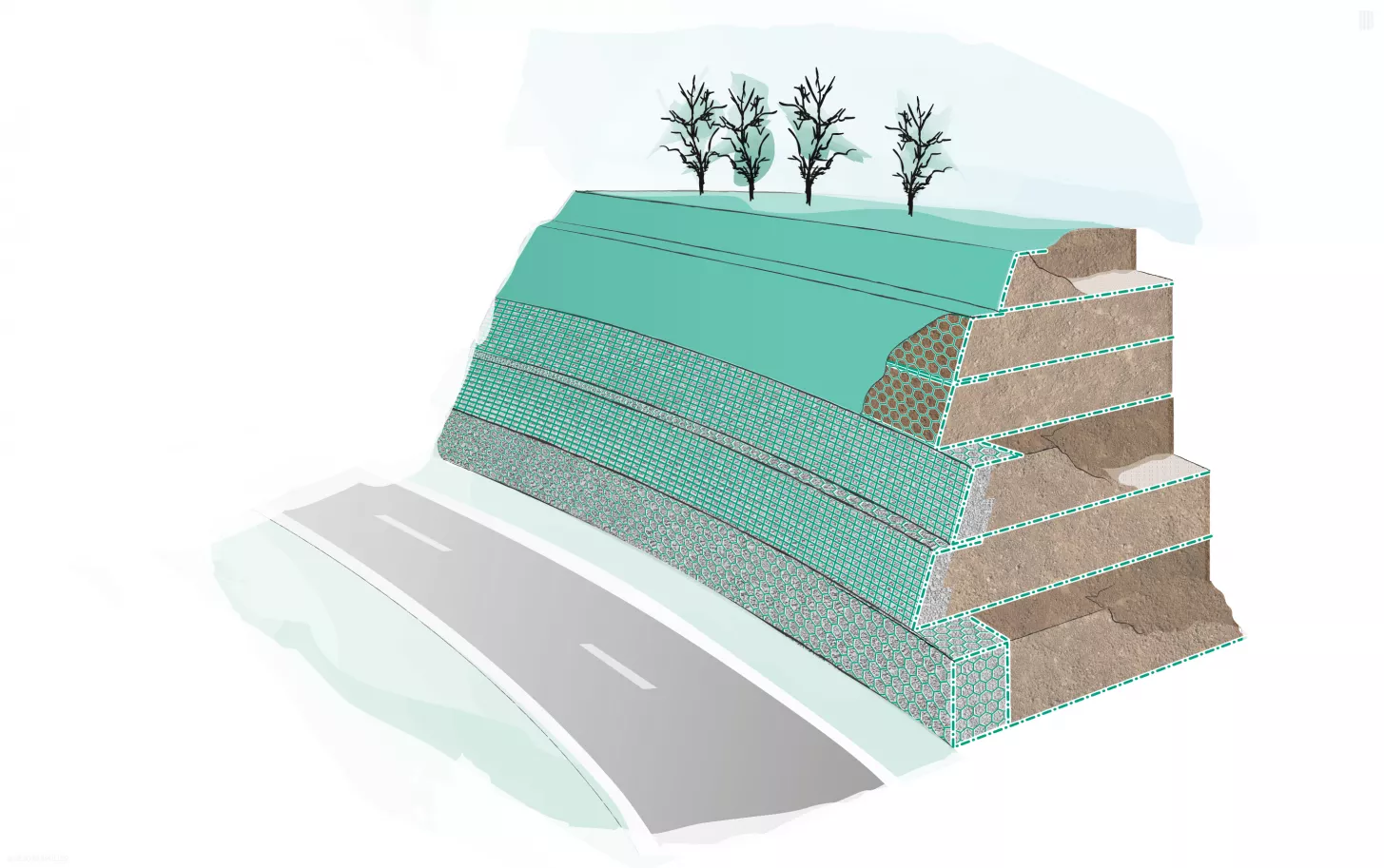
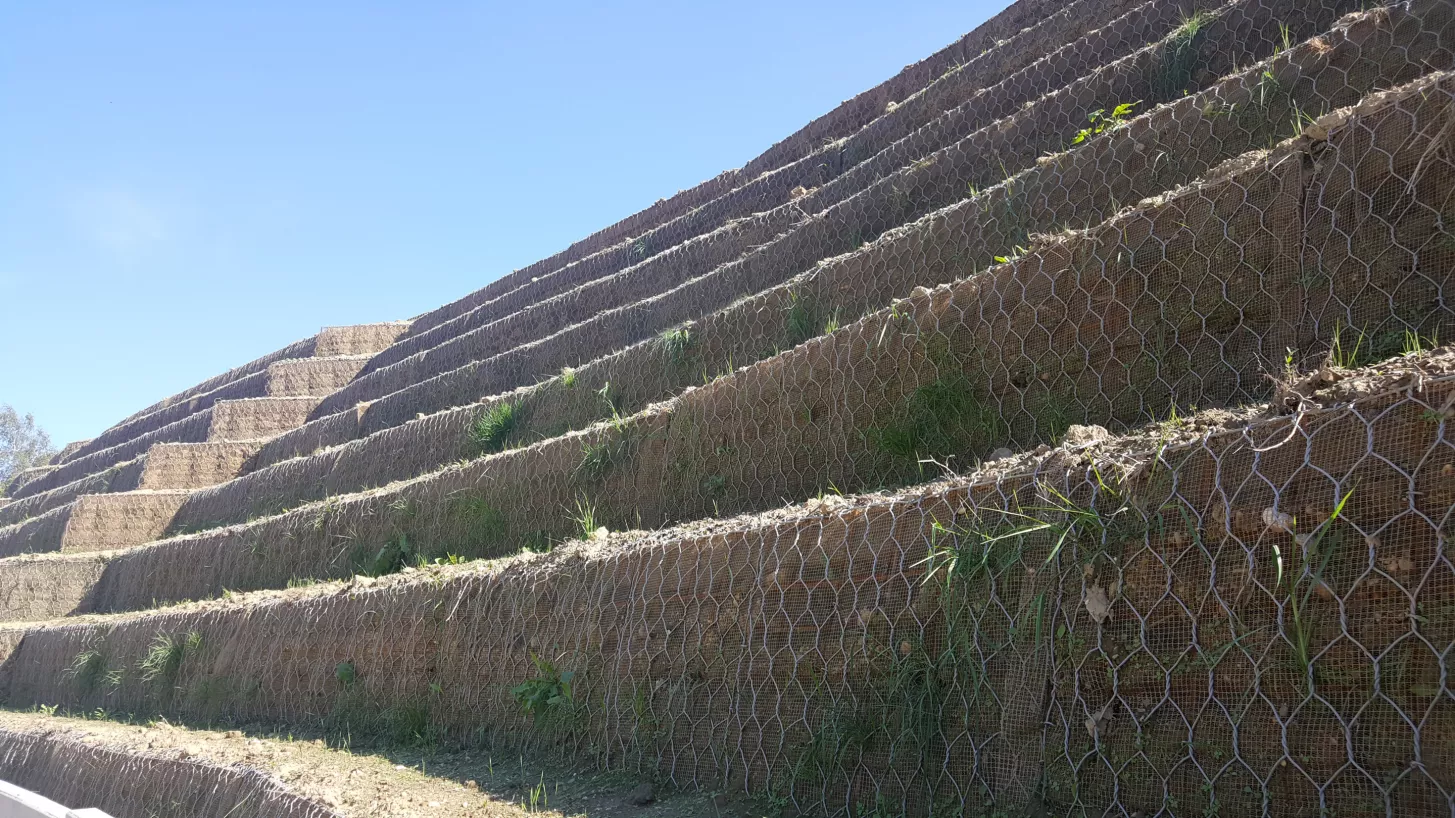
When are Mechanically Stabilised Earth Systems Required?
Mechanically Stabilized Earth systems are primarily used when high embankments or abrupt grade changes must be stabilised cost-effectively and with long-term reliability.
From a slope inclination of approx. 34°, the term steep slope generally applies. In such cases, the natural soil shear strength is often insufficient, and reinforcement becomes necessary to prevent the formation of slip or failure surfaces. Especially for slopes steeper than 45°, MSE systems offer a technically secure solution.
Application Areas of MSE Systems
Standard Applications
MSE is widely used in classic applications, especially in transportation infrastructure and civil engineering. Typical use cases include:
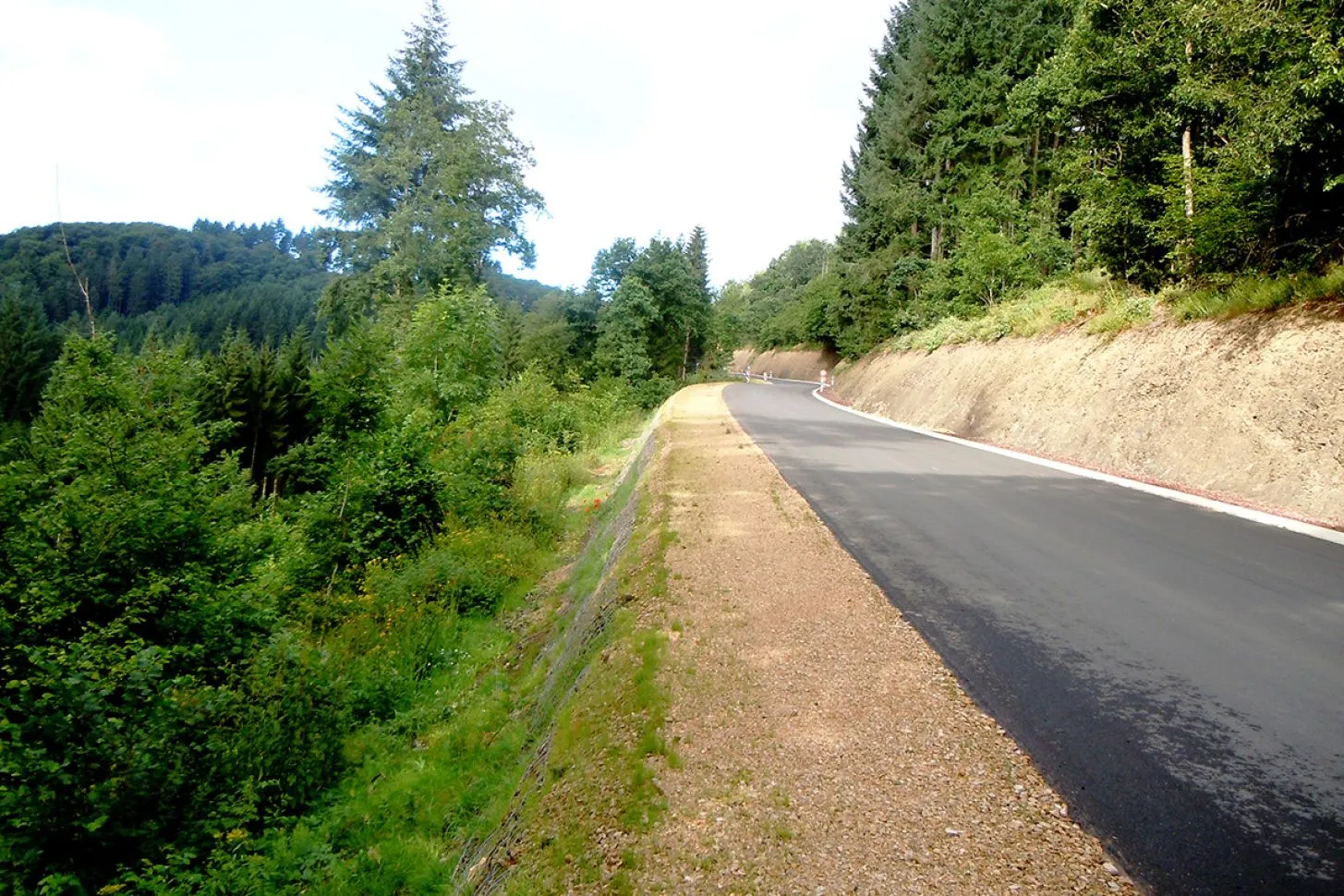
Roadway and bicycle path widening
along existing roads or railway lines
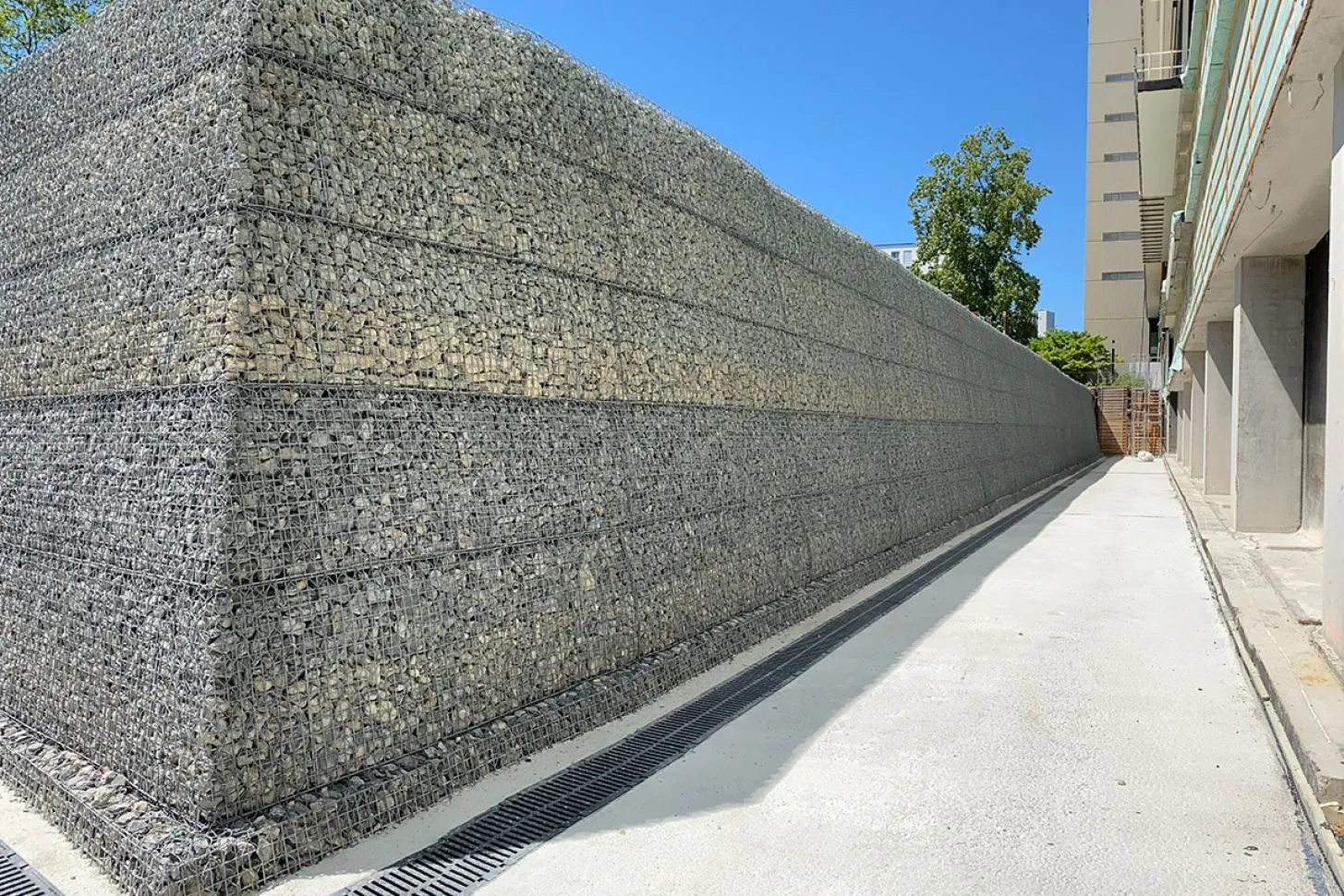
Retaining of grade separations
and stabilisation of embankments

Bridge abutments
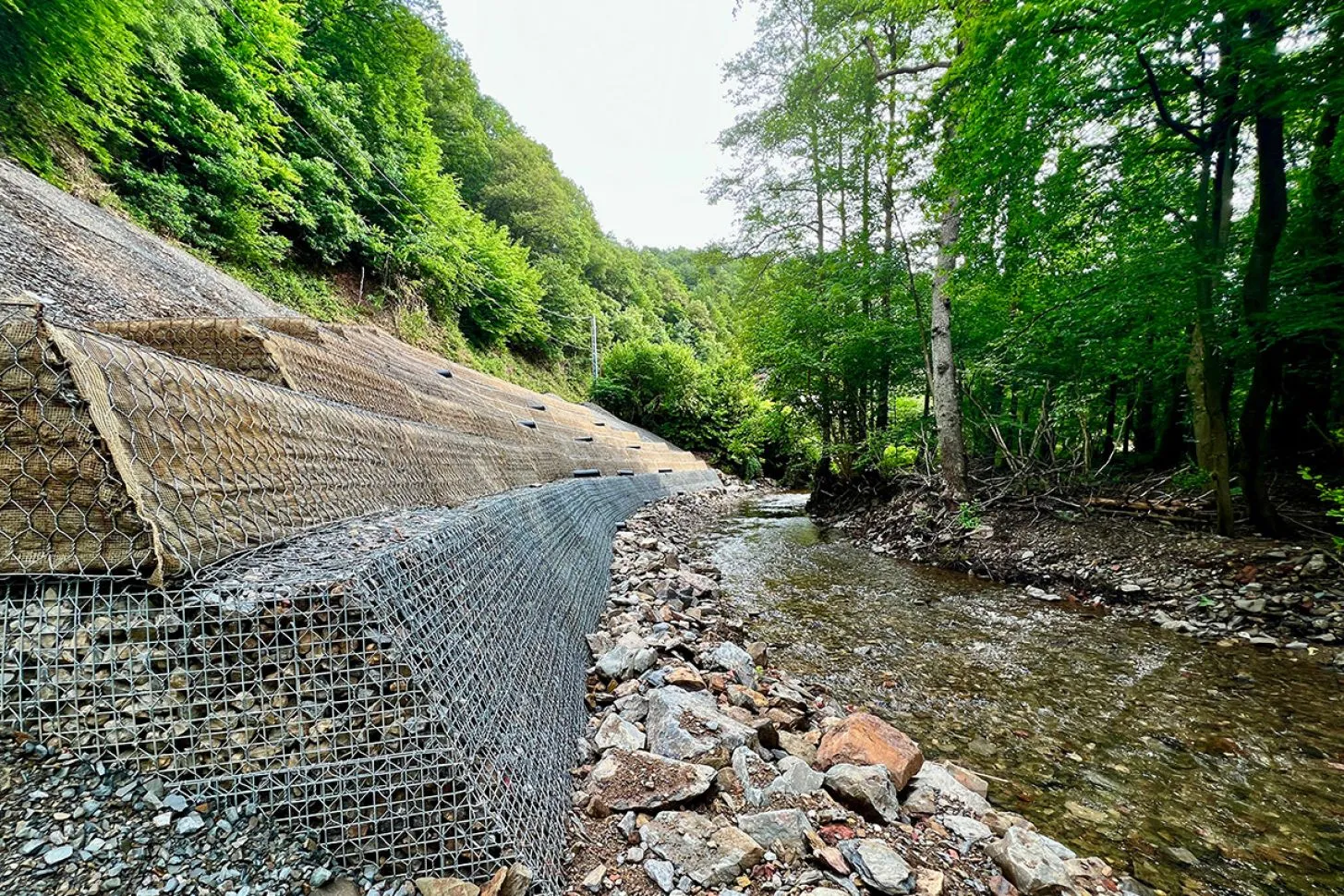
Landslide remediation
and long-term stabilisation of slopes

Space optimisation
through steepening of existing embankments

Noise and protective berms
as eco-friendly alternatives to massive concrete structures
Specialised Applications
In addition to conventional uses, MSE systems are also suited for complex and special engineering challenges. These include:

Protection of watercourse banks or basin slopes
(e.g. stormwater retention basins), combined with vegetation and natural integration

Rock face stabilisation and cladding
in exposed or erosion-prone areas

Landfill footings
Embankment stabilisation at the base of landfills
We are happy to advise you on the wide range of application possibilities of MSE systems with geosynthetic reinforcement – tailored to your project requirements and site conditions.
Technical Properties and Materials of MSE Structures
Structure and Function
MSE structures consist of multiple functionally coordinated components: Reinforcement layers made of geosynthetics or steel are designed to resist tensile forces within the soil mass. Suitable fill materials transfer load into the reinforcements and must meet specific minimum standards regarding compactability and shear strength. Facings such as gabions, natural stone, or vegetated mats serve both aesthetic and erosion control purposes.
Technical Characteristics
MSE systems are characterized by low susceptibility to settlement, excellent adaptability to variable ground conditions, and high durability. Material selection should always be project-specific and based on the geotechnical, chemical, and durability demands of the site.
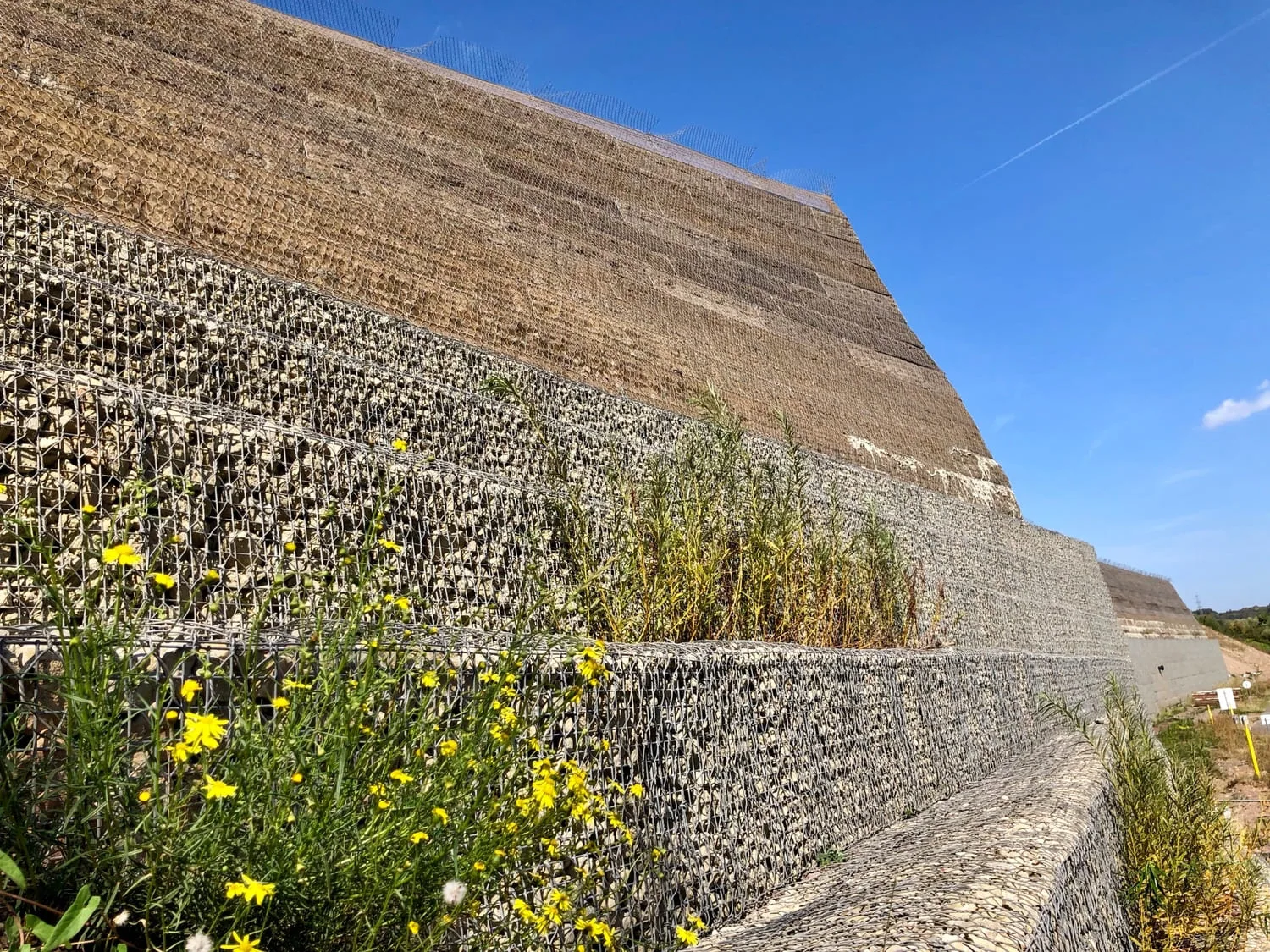

One of BECO BERMÜLLER’s MSE system solutions is based on a highly robust and durable steel wire mesh with duplex protection.
Advantages of using steel mesh reinforcement include:
- High chemical resistance to low and high soil pH (3–13)
- Exceptional durability under coarse fill stress (grain sizes up to 0/250 mm)
- Long-term UV and de-icing salt resistance (min. 125 years)
- Modular design adaptability and pre-assembly
- Excellent recyclability (e.g. re-melting after service life)
Mechanically Stabilised Earth System Solutions
BECO BERMÜLLER offers several tailored MSE system solutions – adapted to technical, environmental, and aesthetic requirements.
BEGREEN steep slope systems
The BEGREEN system combines geogrid reinforcement with a permanent greened front. It is ideal for environmentally sensitive projects that require both structural stability and ecological integration.
Based on the MSE principle, BEGREEN is flexible in its application across various slope inclinations and terrains. Components are designed for efficient installation – especially in urban areas, landscape engineering, and municipal infrastructure. Suitable for inclinations up to 70°.
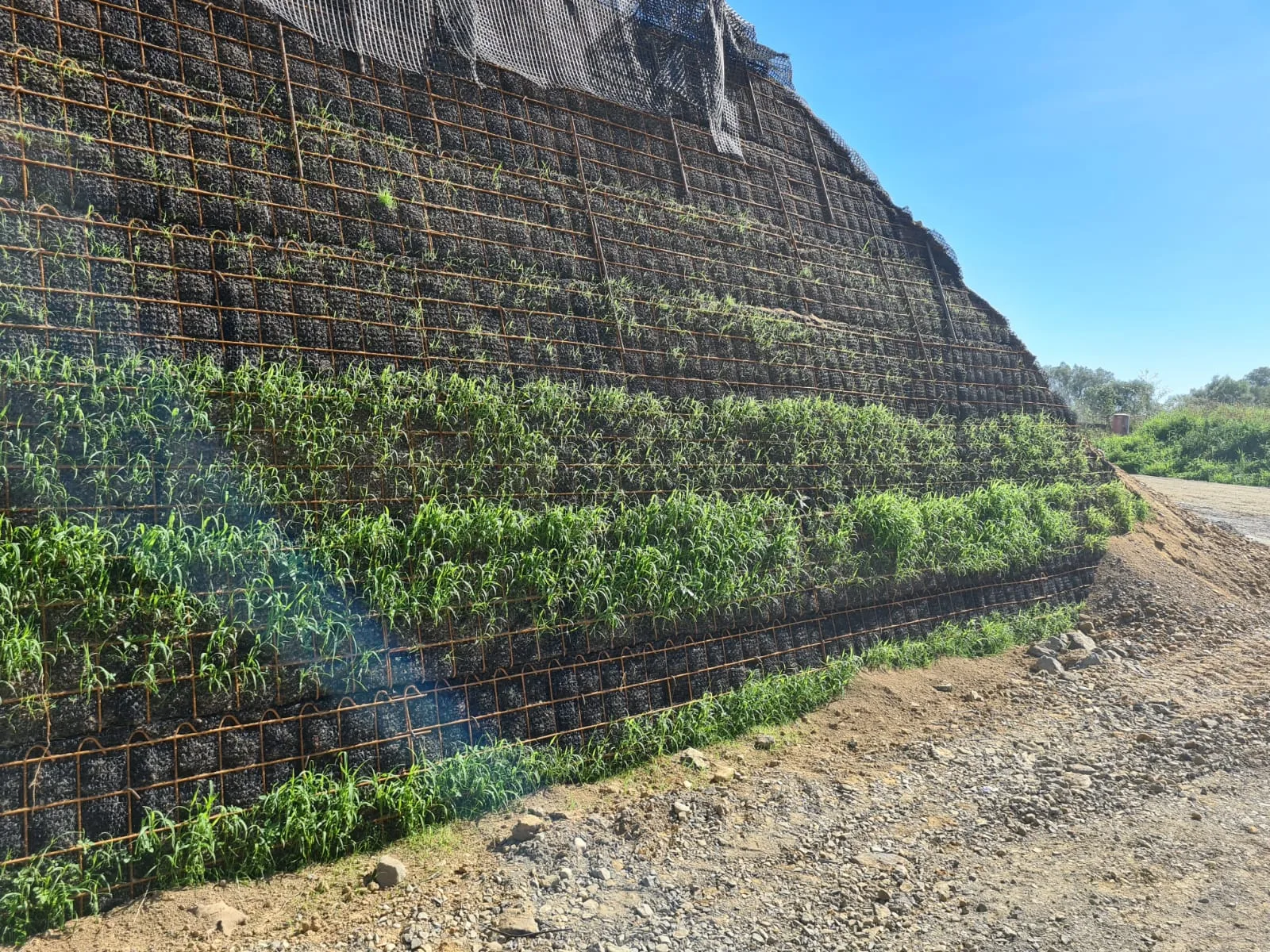
TERRAMESH steep slope systems
TERRAMESH is a proven all-in-one solution for the construction of reinforced soil embankments with either a vegetated or gabion-style stone façade. The system follows the MSE principle with an envelope-style reinforcement method. This technique provides long-term performance and high durability. The primary structural element is a double-twisted, galvanised, and polymer-coated steel wire mesh.
TERRAMESH is suitable for a wide range of applications in infrastructure and civil engineering, including steep slopes and noise barriers.

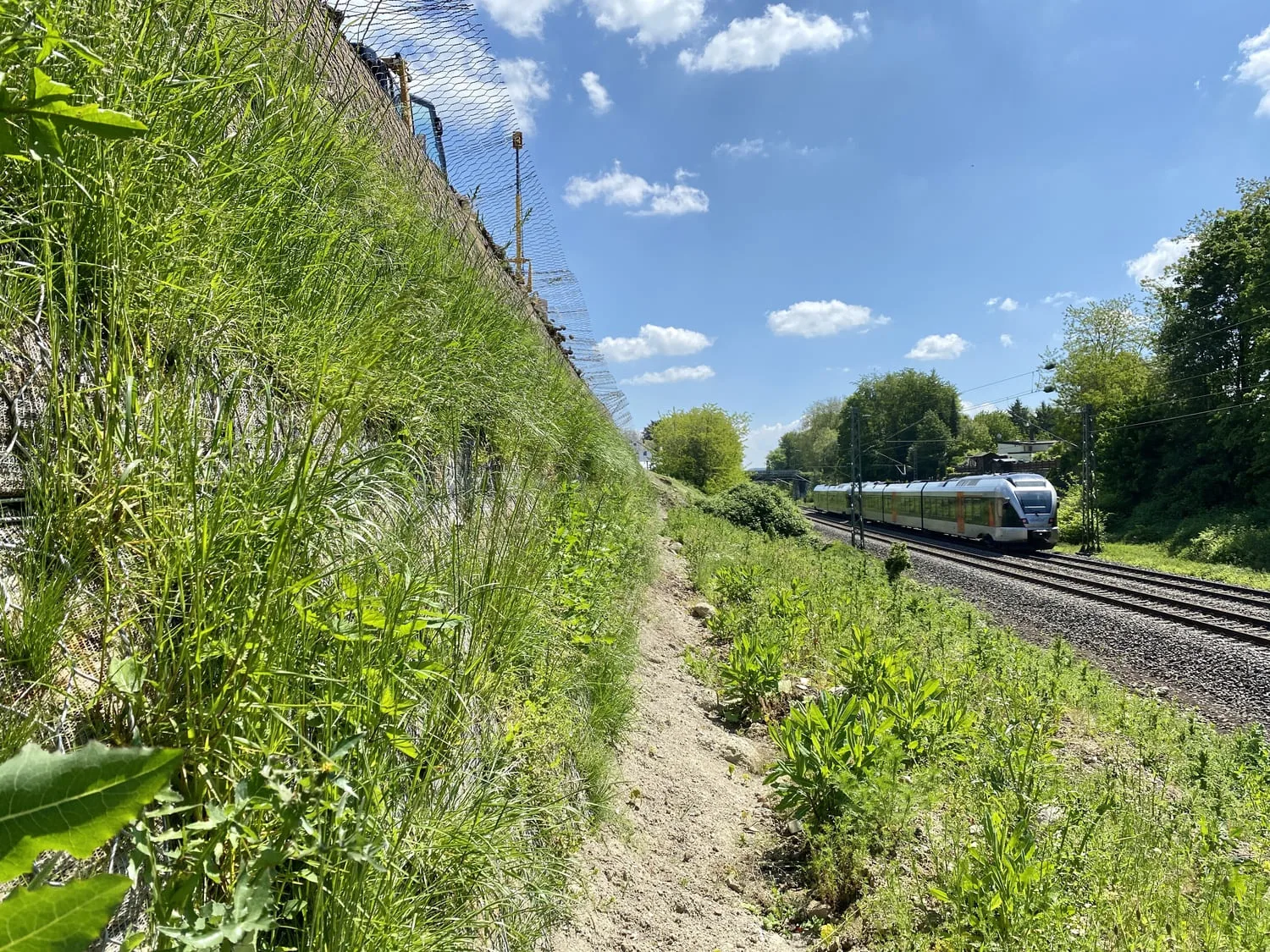
Overview of TERRAMESH System Variants:
- GREEN TERRAMESH – vegetated slope system with integrated erosion control mat, inclinations up to 70°
- MINERAL TERRAMESH 5×5 – steep slope system with gabion-like facing, inclinations up to 85°
- TERRAMESH DUO – dual-panel system for modular embankment construction, inclinations up to 80°
- TERRAMESH SYSTEM – gabion-fronted MSE system with full structural integration, inclinations up to 90°
TERRABENT slope stabilisation and sealing system
TERRABENT is a specialised solution for the stabilisation and sealing of slopes, e.g. in landfill or hydraulic engineering applications. The system combines preassembled TERRAMESH MSE elements with bentonite mats (Geosynthetic Clay Liners, GCLs) to unite mechanical strength and long-lasting impermeability. The GCL provides a homogeneous, thin mineral seal, while the TERRAMESH element ensures slope stability.
TERRABENT is suitable for landfill toe stabilisations, containment of contaminated sites, steep slopes in hydraulic works, or edge sealing in technical infrastructure. Depending on the setup, inclinations up to 85° are possible.
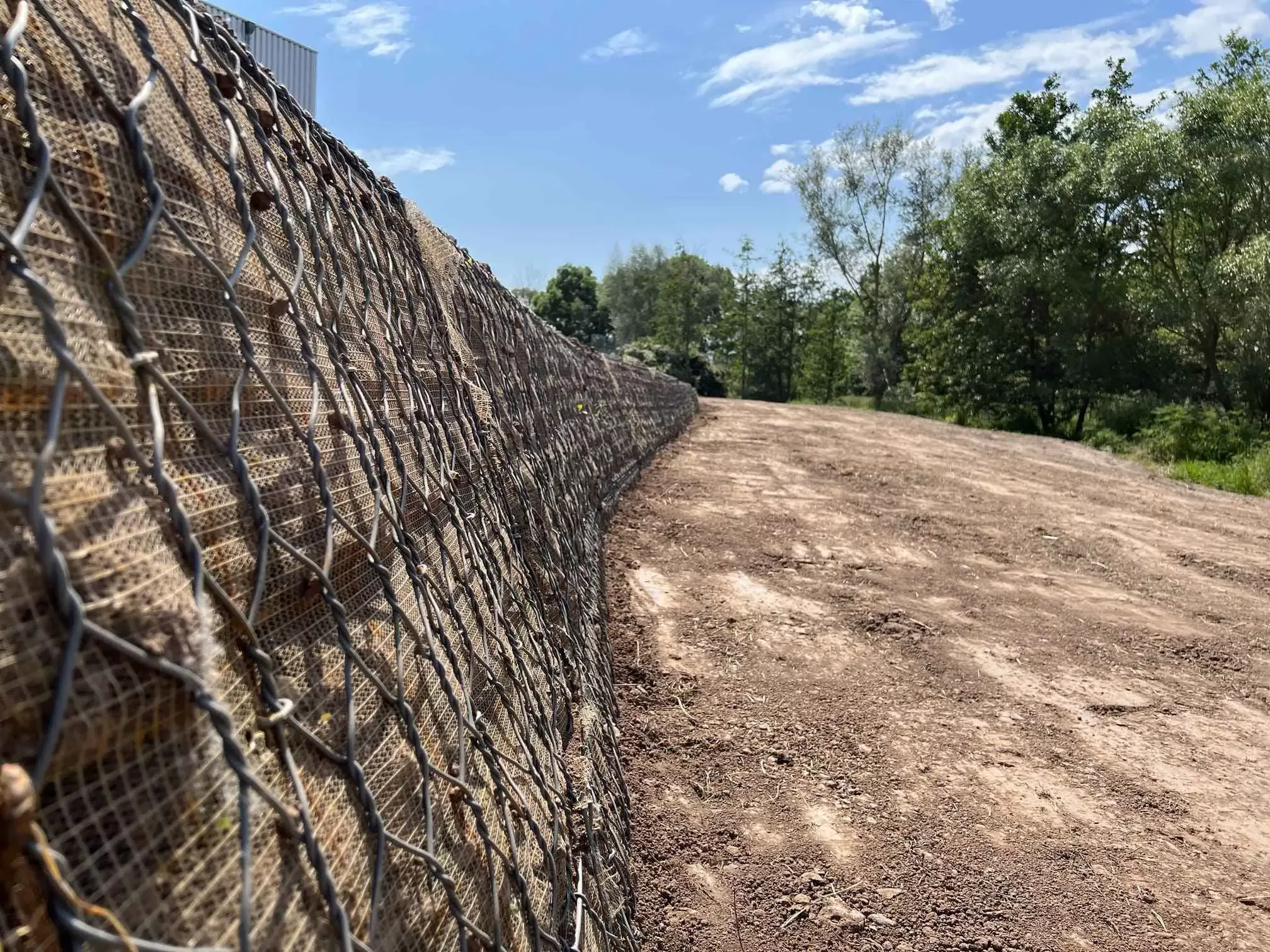
Our Service: Technical Support from the Start
Our application engineering team supports you throughout all project phases – from concept development to construction execution. We assist with:
- Preliminary structural calculations
- Customised system proposals
- 3D models and installation plans
- Specification texts and CAD or BIM data
- On-site briefings and supervision
With many years of experience in Mechanically Stabilised Earth, we ensure that your project is executed to the highest technical standards and in a cost-efficient manner.
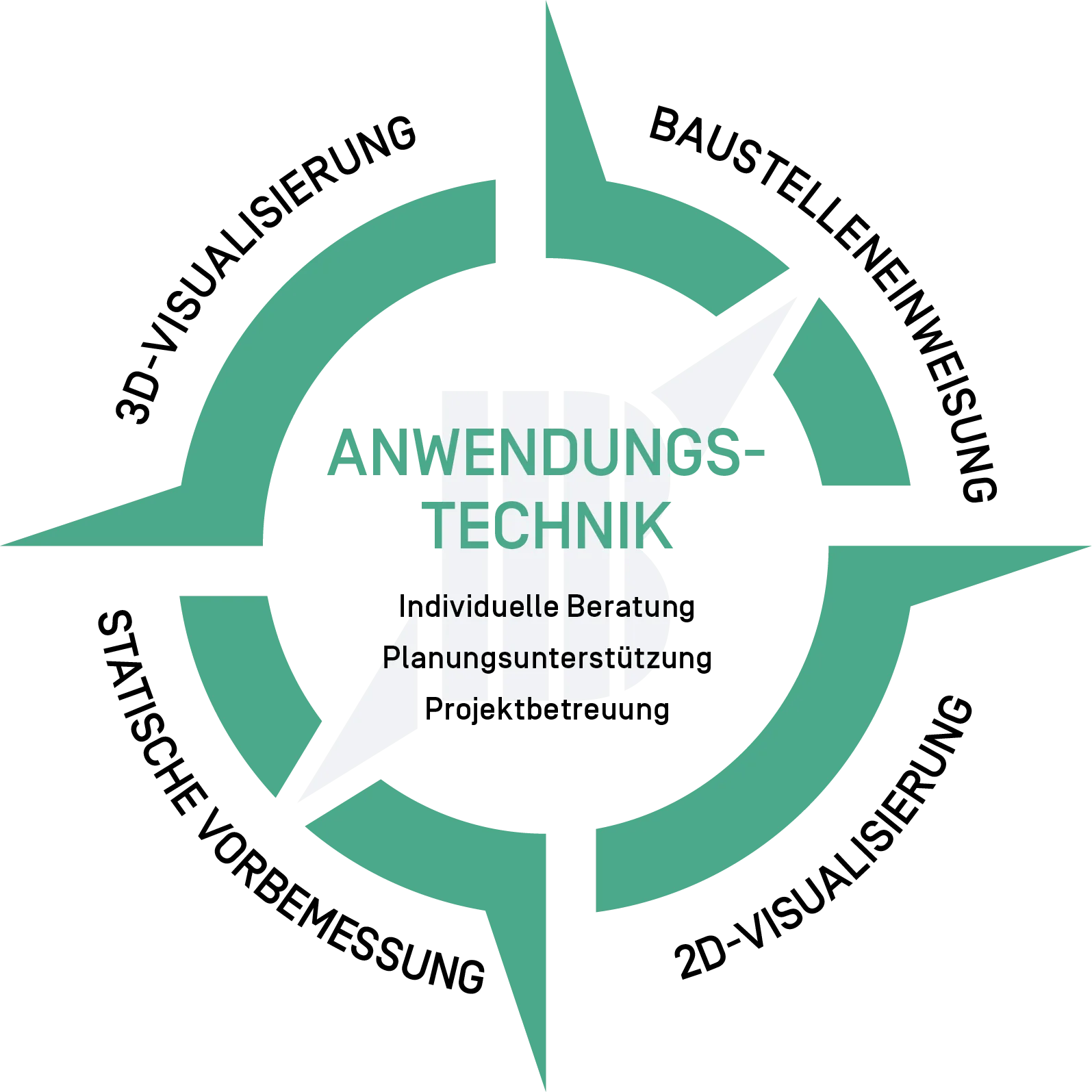
Sustainability and Environmental Advantages of MSE
Compared to conventional retaining walls such as concrete gravity walls or cast-in-place structures, geosynthetic MSE systems offer considerable benefits in terms of sustainability and resource conservation. Concrete structures require high energy input for cement production, significant logistics efforts and often deep foundations. In contrast, MSE systems make use of locally sourced fill, reduce material requirements and simplify logistics on site. As a result, the overall carbon footprint is significantly lower.
Greening
In addition, geosynthetic MSE structures with slope angles up to 70° can be vegetated, providing both ecological and visual integration into the landscape. Vegetation also protects against vandalism (e.g. graffiti) and promotes biodiversity of flora and fauna.
Environmental benefits at a glance:
- Reduction of CO₂ emissions through material savings, shorter transport routes and vegetated facings
- Resource-friendly construction by reusing locally available soil
- Minimal land sealing due to slender design
- Greenable facings for ecological enhancement and protection against vandalism
- Lower energy input compared to concrete construction

Effect on the Microclimate
Unlike concrete structures that emit heat and contribute to the urban heat island effect, vegetated slopes help regulate microclimates and retain rainwater during heavy precipitation.
CO₂ Balance
MSE structures also provide potential for additional CO₂ capture through vegetation, further improving their environmental performance.
Installation of Geosynthetic MSE Systems
Installing geosynthetic MSE systems follows a step-by-step process that requires coordinated execution:
After stripping the topsoil and preparing the base layer to meet structural requirements, system components are prepared – usually involving the cutting of roll materials. The facing formwork is properly placed, and the first reinforcement layer, cut to project-specific dimensions, is laid out. This is then covered with suitable fill material and compacted in layers.
Depending on the system type, different installation methods are used – critical aspects include correct reinforcement alignment, achieving required compaction levels, and incorporating relevant components for erosion control and facing support.

Advantages of Preassembled Systems
Factory-preassembled systems such as TERRAMESH or TERRABENT significantly reduce construction time. The prefabricated elements are simply placed onto the prepared subgrade, unfolded, filled and compacted. Required reinforcement lengths are pre-manufactured based on the design specifications. Training and on-site instruction by our technical and field service teams ensure correct installation.
Watch the TERRAMESH steep slope system installation video for a detailed step-by-step overview.
Contact us for Tailored Mechanically Stabilised Earth Solutions
Planning an MSE structure or need project-specific assistance? The BECO BERMÜLLER technical team is here to support you – from the initial idea through to engineering and construction. Whether you require structural pre-design, 3D layout planning or site support – we offer expert guidance at every stage.
Further information about:
Mechanically Stabilised Earth (MSE)

Mechanically Stabilised Earth (MSE)
Anwendungstechnik Geobaustoffe
Sebastian Schiller
MSc. Geow.
![]() +49 (0) 911 64200-29
+49 (0) 911 64200-29
![]() sebastian.schiller@beco-bermueller.de
sebastian.schiller@beco-bermueller.de
Anwendungstechnik Geobaustoffe
Fridolin Sturm
BSc. Geow.
![]() +49 (0) 911 64200-46
+49 (0) 911 64200-46
![]() fridolin.sturm@beco-bermueller.de
fridolin.sturm@beco-bermueller.de

